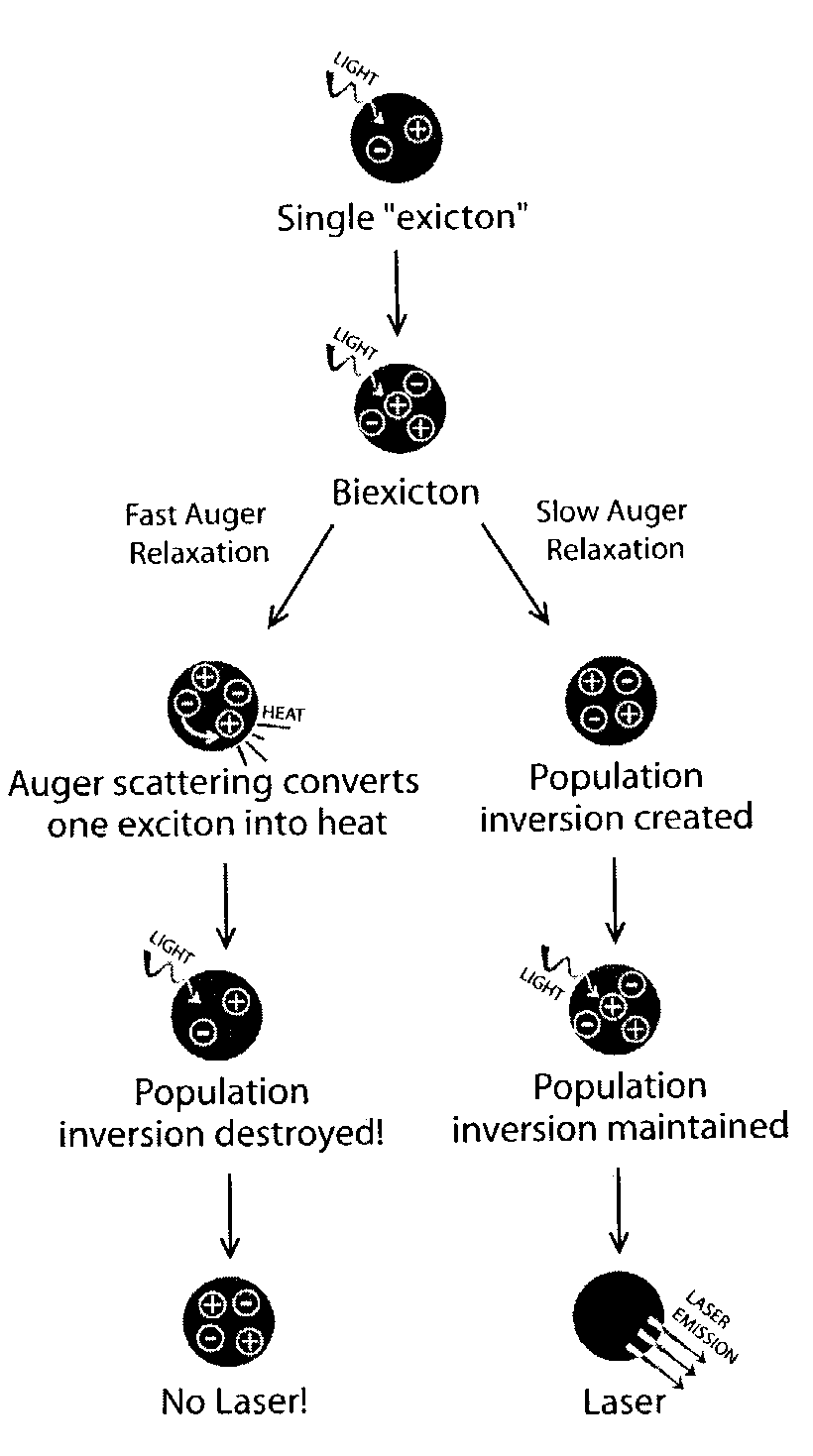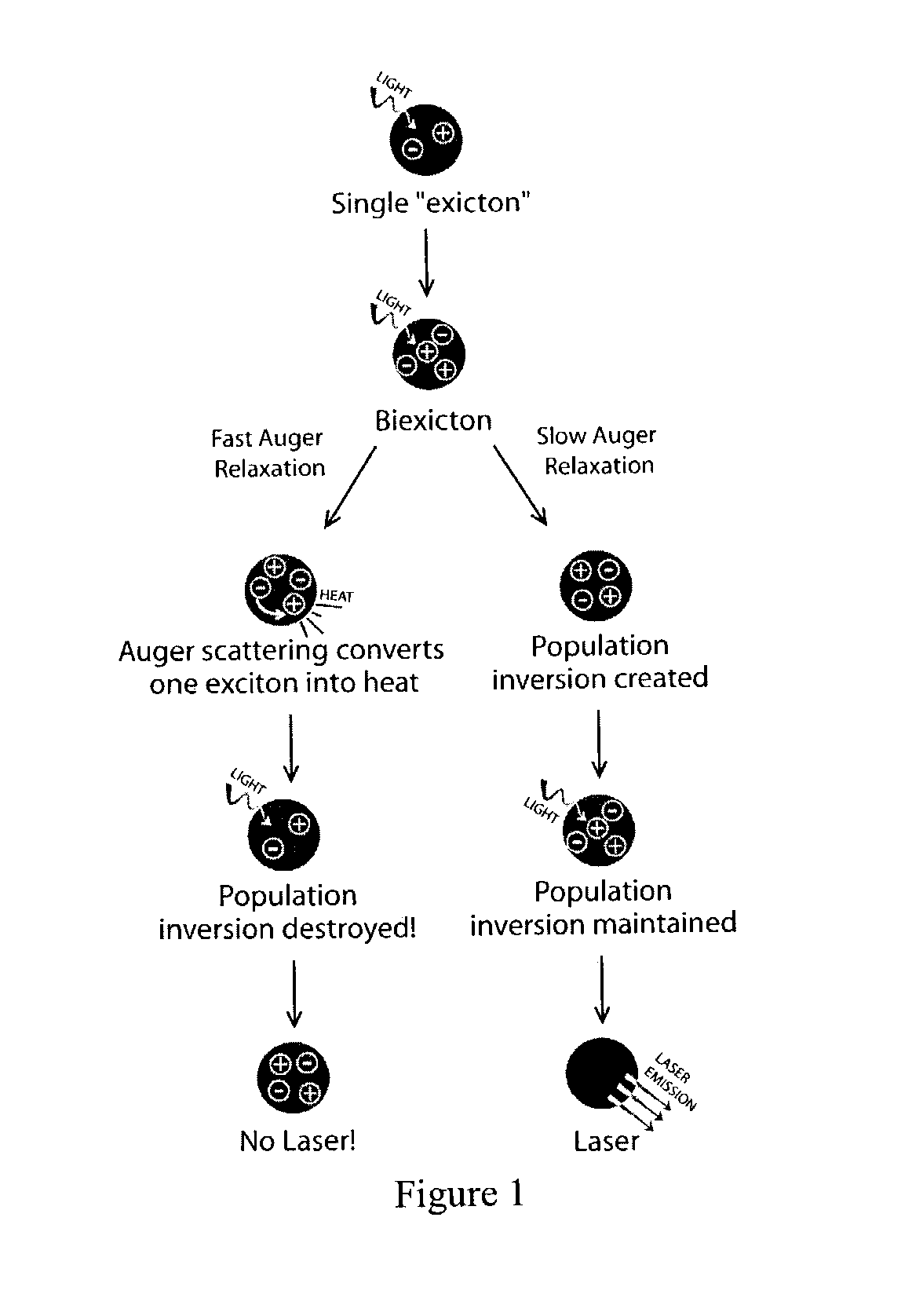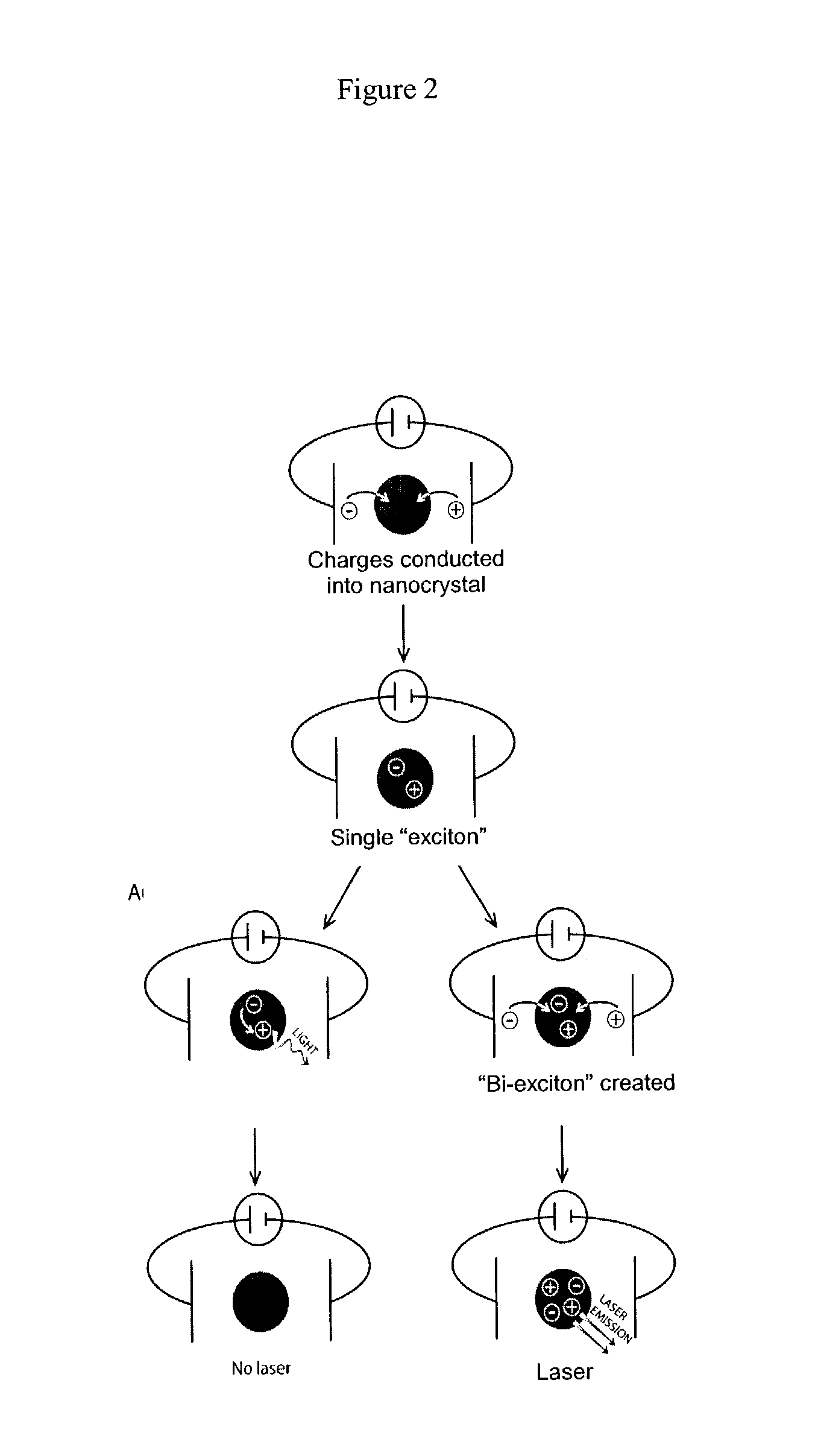Nanotechnology-enabled optoelectronics
a technology of optoelectronics and nanotechnology, applied in the direction of laser optical resonator construction, laser details, semiconductor lasers, etc., can solve the problems of limiting the maximum available bandwidth, overloading the existing infrastructure, and unavoidable need to continue increasing the available bandwidth
- Summary
- Abstract
- Description
- Claims
- Application Information
AI Technical Summary
Problems solved by technology
Method used
Image
Examples
Embodiment Construction
[0016]The present invention is generally directed to the use of nanomaterials, and particularly nanocrystals, e.g., nanodots, nanorods and three dimensional or branched nanocrystals in optoelectronic applications that are expected to result in a new generation of electrooptic devices where each microscopic step (absorption, emission, transport, charge injection, etc.) is independently and simultaneously optimized, while retaining low-cost high-volume processing.
[0017]Similar to today's semiconductor optical amplifiers (SOAs), the “nanocomposite optical amplifiers” (NOAs) described herein embody a broad-functioned technology with applications throughout the telecom industry. Unlike SOAs, however, NOAs can be fabricated and processed like a plastic. As a result, it is expected that these electrically addressable NOAs will have broad applications in, e.g., low-cost lasers, detectors, amplifiers, wavelength converters, switches and variable attenuators that function over a broad spectra...
PUM
 Login to View More
Login to View More Abstract
Description
Claims
Application Information
 Login to View More
Login to View More - R&D
- Intellectual Property
- Life Sciences
- Materials
- Tech Scout
- Unparalleled Data Quality
- Higher Quality Content
- 60% Fewer Hallucinations
Browse by: Latest US Patents, China's latest patents, Technical Efficacy Thesaurus, Application Domain, Technology Topic, Popular Technical Reports.
© 2025 PatSnap. All rights reserved.Legal|Privacy policy|Modern Slavery Act Transparency Statement|Sitemap|About US| Contact US: help@patsnap.com



